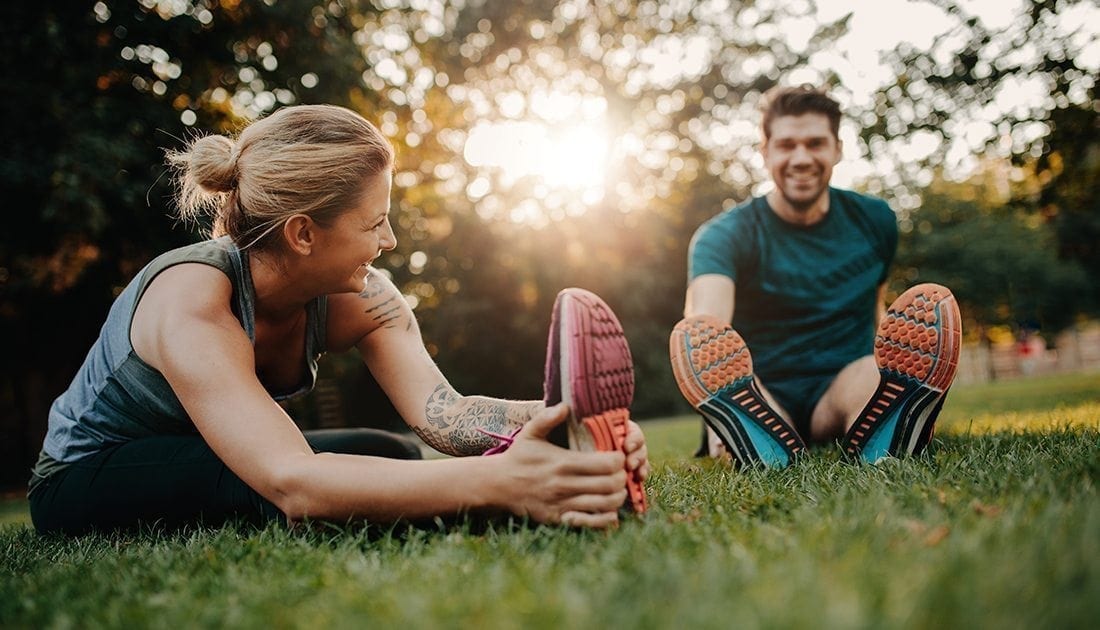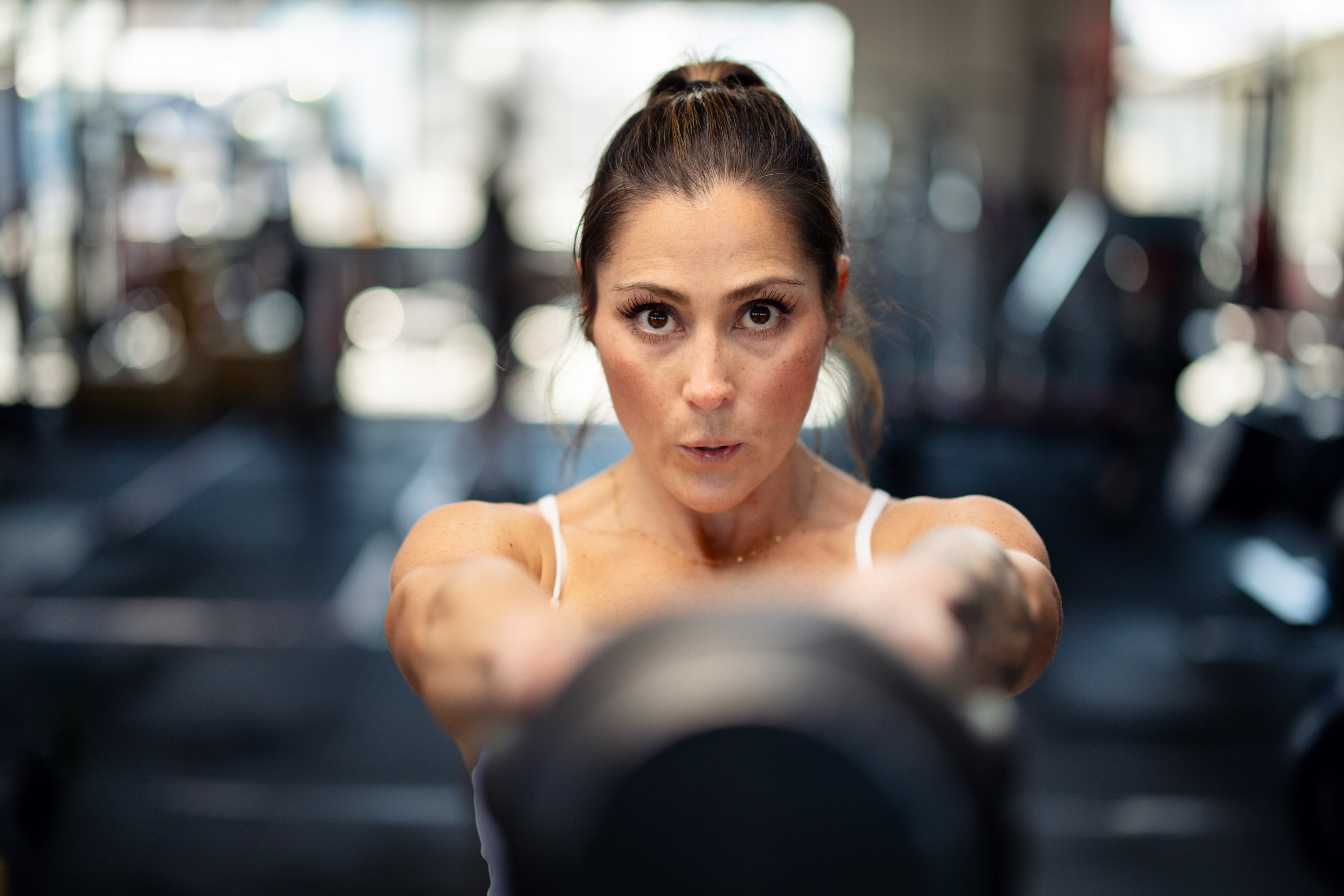We’ve all felt the thrill (and relief) after crushing a workout. You hit PRs, you made gains, and worked up one heck of an appetite. You feel large, in charge, and on top of your fitness game; that is until, the debilitating soreness from that intense workout slams you in the face!
Yes, the feeling of utterly dominating your workout is indescribable, but those miserable DOMS (delayed onset muscle soreness) are accompanied by some many expletives that even a sailor would blush.
Isn’t there some way you can rock a hardcore workout, yet still be able to get out of bed without feeling immense soreness in the days after? Of course there is! It’s all about optimizing recovery!
Ahead, we’ve got several tips and tricks for you to crush soreness just like you crushed your workout. With these tips, you’ll recovery faster enabling you to get back in the gym day after day and keep those gains coming.
First Things First
Before we get to the recovery hacks, it’s important for us to stress that these recovery hacks won’t be nearly as effective as they could be if you’re not already doing the things you should be doing. We’re talking about eating the proper amount of carbohydrates, proteins, and fats your body needs to repair and build muscle along with getting a full 8-9 hours of sleep each and every night. Without those two things, the rest of these tips won’t do much good.
So, make sure to properly fuel your body before and after training. And, make sure to get a solid night’s rest every night. Those two things go a long way to ensuring adequate recovery, but for those days when you really take it to your muscles at the gym, these tips will be a life saver.
Recovery Hacks to Crush Soreness
-
Ice Baths
Following a grueling workout, you’re drenched in sweat. What better way to kick start the recovery process, and cool off at the same time, than taking a dunk in an ice bath?! The reason ice baths accelerate recovery is that immersing your body in ice cold water constricts your blood vessels and reduces swelling. Once you get out of the ice bath, your body immediately begins to warm up, blood vessels dilate, and fresh nutrient rich blood rushes into your muscles, delivering the essential amino acids they need to repair and grow while simultaneously removing metabolic waste products. Research confirms this too, noting that cold water therapy aids recovery and reduces markers of muscle damage. <1>
-
Foam rolling
Foam rolling, a.k.a. self-myofascial release (SMR), is a fancy way of describing a self-administered remedy for sore muscles. Utilizing anything from a tennis ball to a PVC pipe, foam rolling works by applying pressure to the “trigger” points in your muscles that are causing the aches and pains. “Rolling” over them, or remaining on those painful spots until they loosen, helps restore the smooth, supple, elastic nature of the muscle.
Exercise breaks down and knots up your muscles. Foam rolling is used to return them to normal. You can do foam rolling before or after your workout, or the days following your workout for when those knots that accumulate during the week.
Just be careful if you’ve never done any sort of foam rolling before, it can be rather excruciating at times. For this reason, it’s best to start with the softer foam rollers and tennis ball and gradually work your way up to the lacrosse ball and PVC pipe.
-
Massage
Similar to foam rolling, getting a deep tissue or sports massage can do wonders for relieving muscle soreness in the days after a tough workout. Make sure drink plenty of fluids following your massage, as deep tissue massages in and of themselves can leave you just as sore as your workout did!
-
Compression Gear
No doubt when watching sports, you see athletes of all kinds wearing compression sleeves on their arms and legs. You’ve probably wondered why in the world, they have these goofy looking sleeves on.
It’s because compression sleeves (“garments”) can aid recovery. They also can boost performance too. The reason these sleeves work is that they increase circulation by squeezing and compacting (“compressing”) the muscles in your arms and legs. Doing so delivers more oxygen and nutrients while aiding waste removal. Research has shown benefit to using compression garments, but there’s also so showing it doesn’t offer too much benefit. <3,4,5>
If you’ve exhausted all other options for enhancing recovery, then compression sleeves might be just the thing you need.
-
Active Recovery
While the thought of doing additional exercise while your crippled with soreness sounds as pleasing as a root canal, doing some form of light exercise the day after your workout can help offset soreness. Performing light, active recovery activities such as hiking, walking, or even yoga can help promote increased blood flow, which helps flush out soreness.
Bear in mind though, that you don’t want to push the envelope too hard with these active recovery days. The goal is to just get moving, get the blood flowing, and mildly elevate your heart rate. You’re not trying to break any records here, folks. Going too hard on your active recovery activities only serves to hinder the natural recovery processes of the body, prolonging the amount of time you’re sore.
-
BCAAs
We mentioned food being a critical component of optimizing recovery up top, but we need also need to discuss the role supplements can play in alleviating muscle soreness. One of the most well-researched and proven supplements you can use to stave off soreness and accelerate recovery are branched-chain amino acids (BCAAs).
BCAAs are a special group of amino acids primarily responsible for stimulating protein synthesis in the body. Numerous studies have shown that consuming BCAAs around your training can limit exercise-induced muscle damage, promote muscle protein synthesis, and accelerates recovery. <6,7> BCAAs can also help preserve lean muscle while training, due to the fact that exercise breaks down muscle tissue. This makes BCAAs all the more vital to optimal performance, recovery, and growth!
Accelerate Recovery with Steel Fuel
Recovery needs to be taken just as seriously as your training. Choosing the right recovery tools and supplements can be the determining factor in avoiding or facing soreness. Steel Fuel provides 5 grams of BCAA per serving in the research-backed 2:1:1 ratio that boosts endurance, reduces fatigue, supports muscle repair. Combined with a host of vital electrolytes, Steel Fuel provides the required fuel your body needs to perform and recover to the max!
References
- Ingram J, Dawson B, Goodman C, Wallman K, Beilby J. Effect of water immersion methods on post-exercise recovery from simulated team sport exercise. J Sci Med Sport. 2009;12(3):417-421. doi:10.1016/j.jsams.2007.12.011.
- Engel FA, Holmberg H-C, Sperlich B. Is There Evidence that Runners can Benefit from Wearing Compression Clothing? Sports Med. 2016;46(12):1939-1952. doi:10.1007/s40279-016-0546-5.
- Born D-P, Sperlich B, Holmberg H-C. Bringing light into the dark: effects of compression clothing on performance and recovery. Int J Sports Physiol Perform. 2013;8(1):4-18.
- Hamlin MJ, Mitchell CJ, Ward FD, Draper N, Shearman JP, Kimber NE. Effect of compression garments on short-term recovery of repeated sprint and 3-km running performance in rugby union players. J strength Cond Res. 2012;26(11):2975-2982. doi:10.1519/JSC.0b013e3182711e0b.
- Stickford AS, Chapman RF, Johnston JD, Stager JM. Lower-leg compression, running mechanics, and economy in trained distance runners. Int J Sports Physiol Perform. 2015;10(1):76-83. doi:10.1123/ijspp.2014-0003.
- Negro M, Giardina S, Marzani B, Marzatico F. Branched-chain amino acid supplementation does not enhance athletic performance but affects muscle recovery and the immune system. J Sports Med Phys Fitness. 2008;48(3):347-351.
- Howatson G, Hoad M, Goodall S, Tallent J, Bell PG, French DN. Exercise-induced muscle damage is reduced in resistance-trained males by branched chain amino acids: a randomized, double-blind, placebo controlled study. Journal of the International Society of Sports Nutrition. 2012;9:20. doi:10.1186/1550-2783-9-20.

